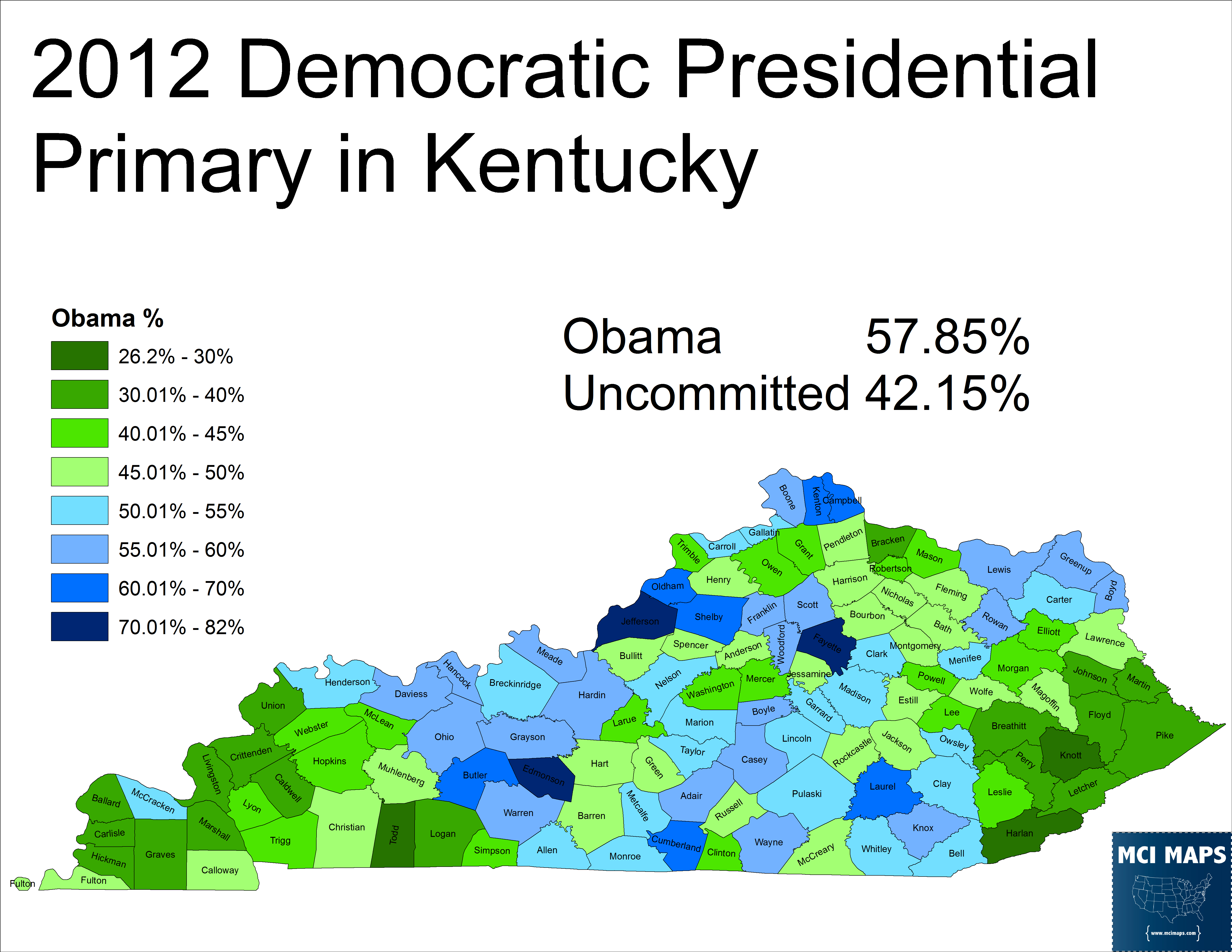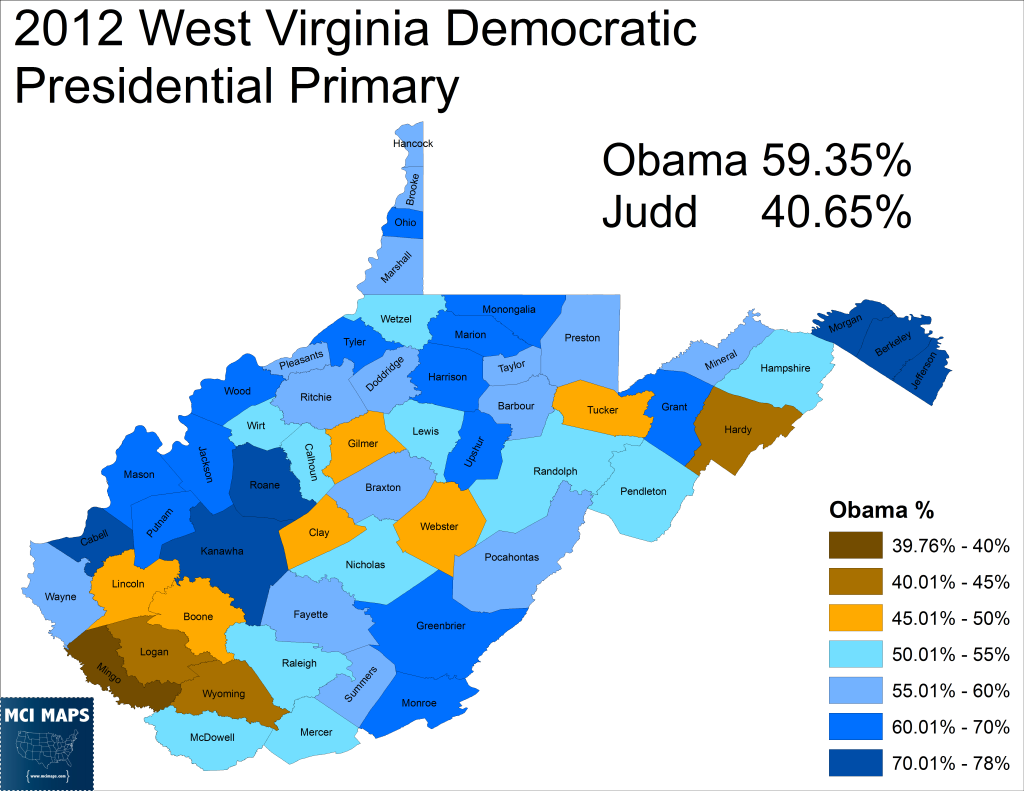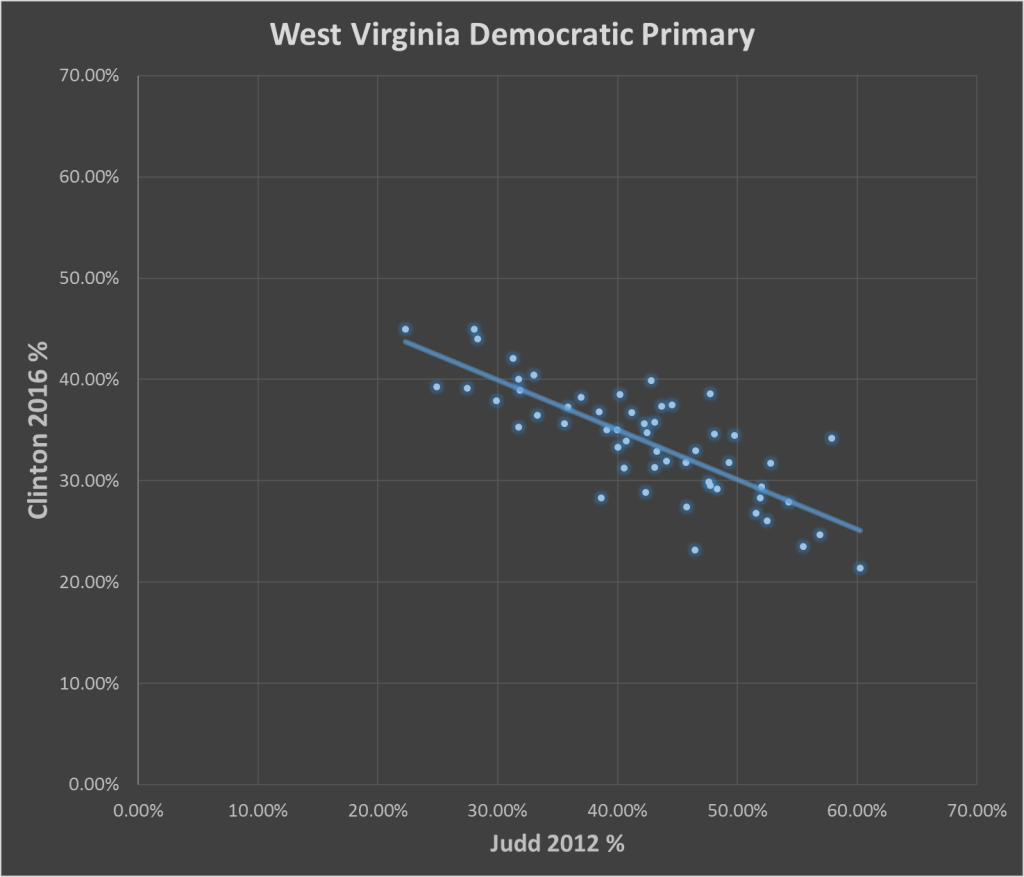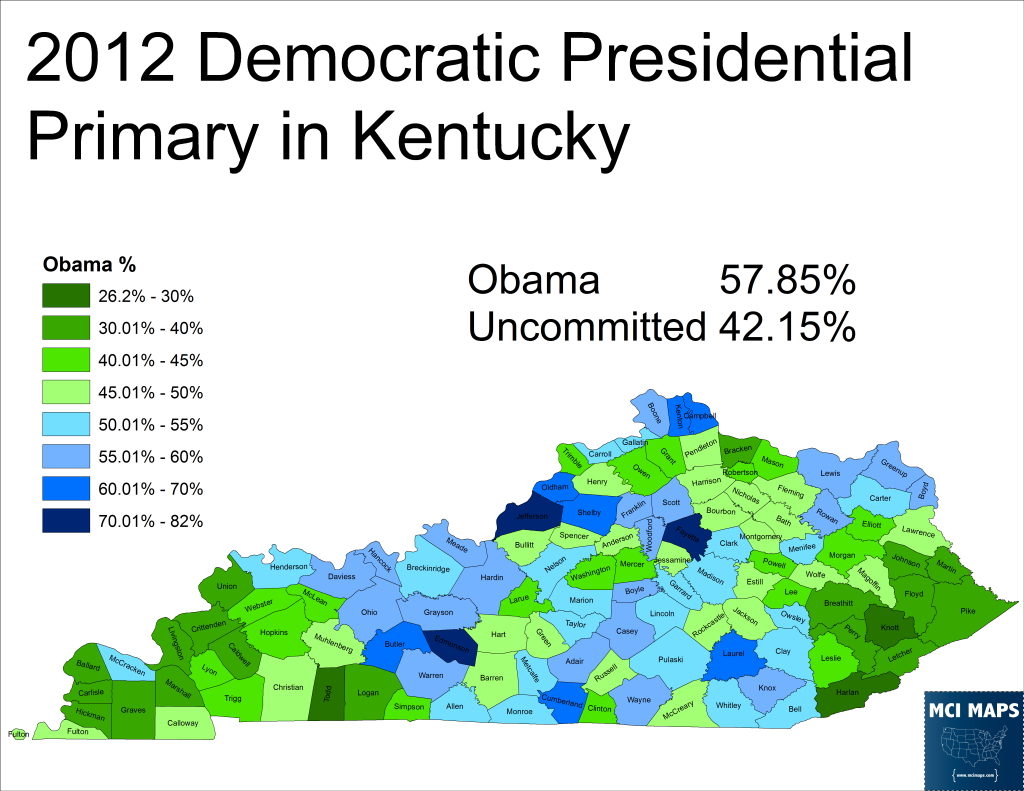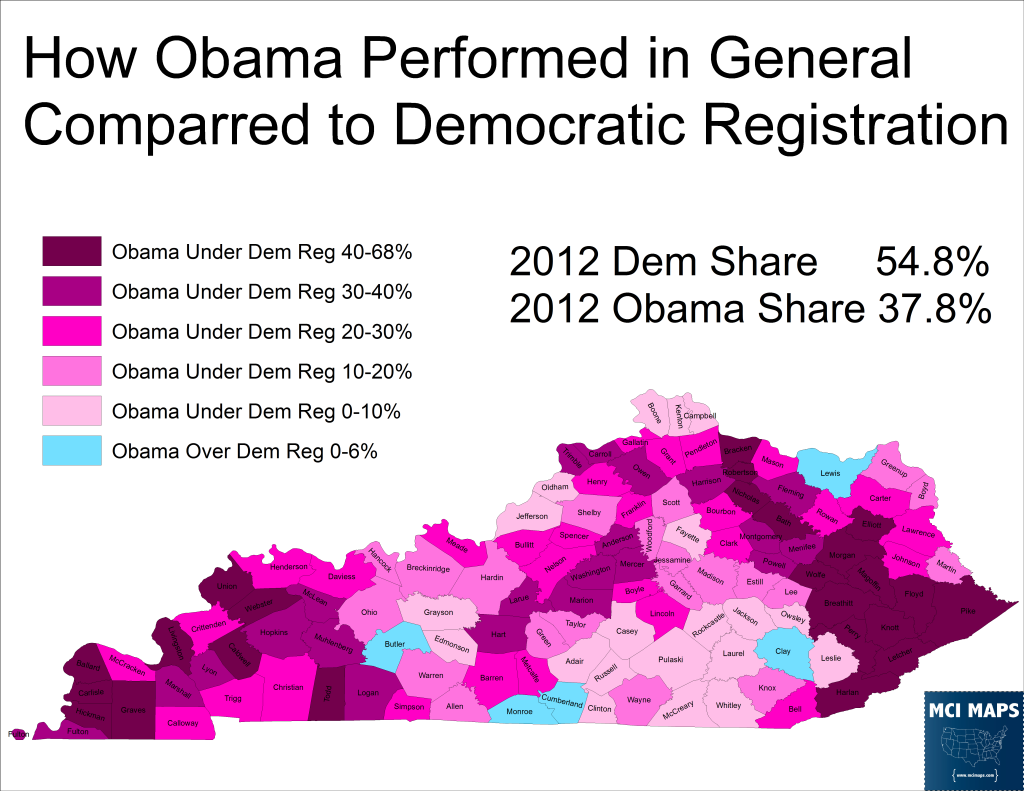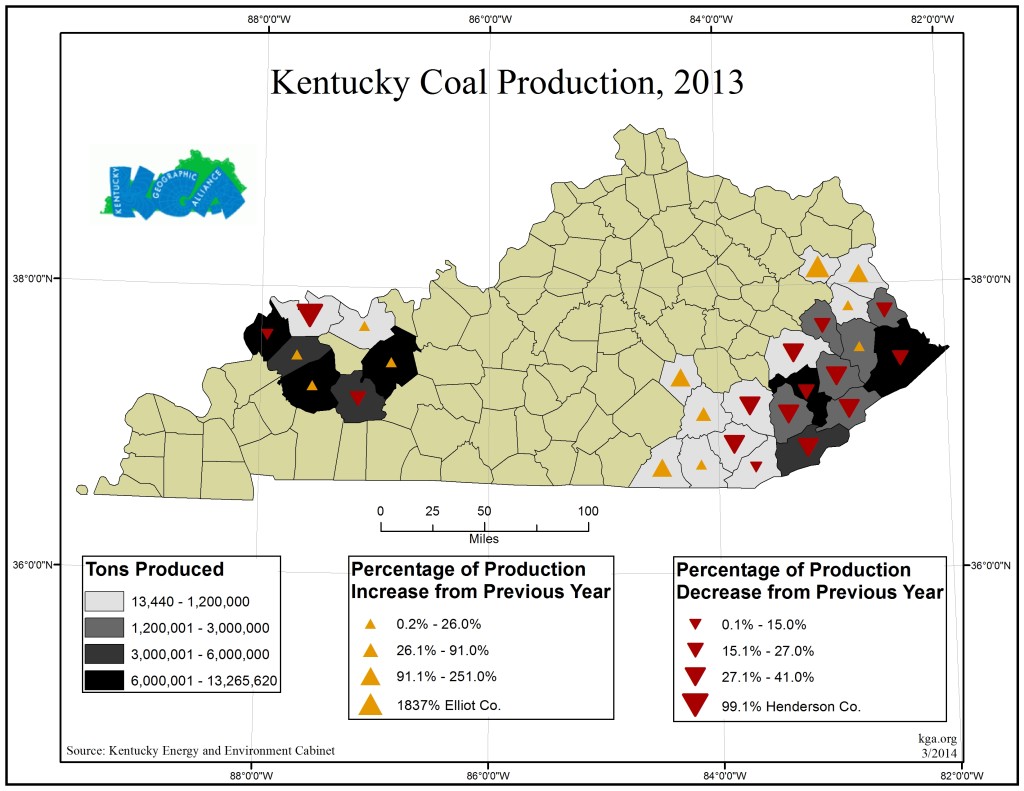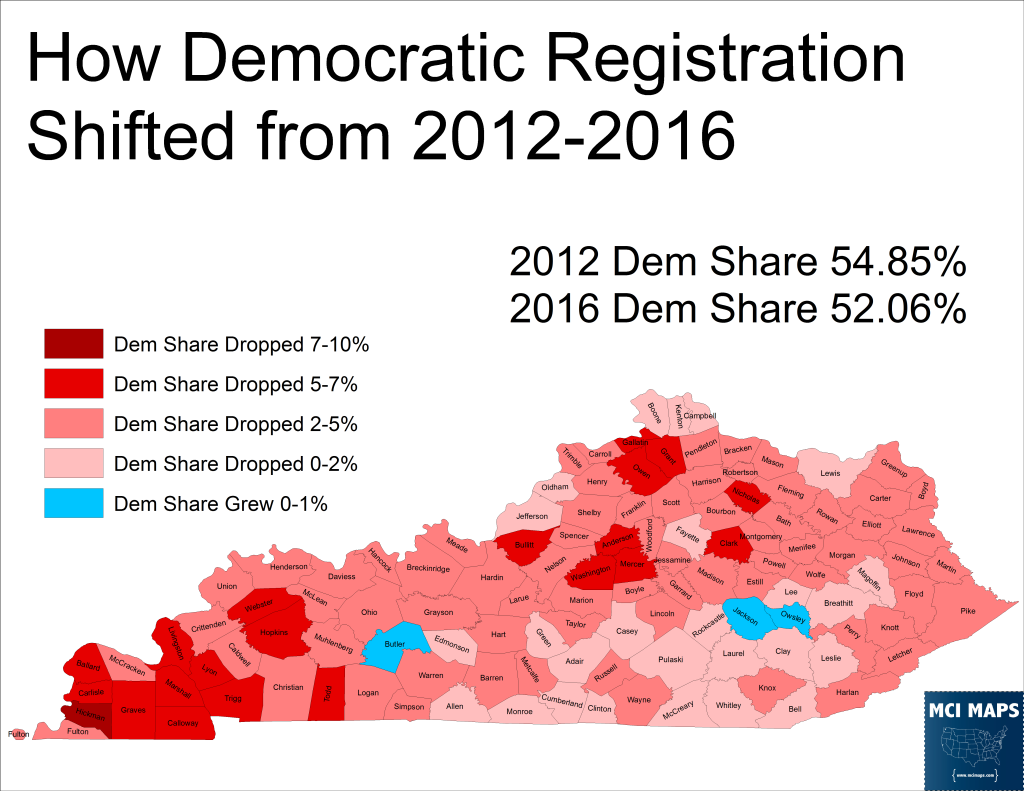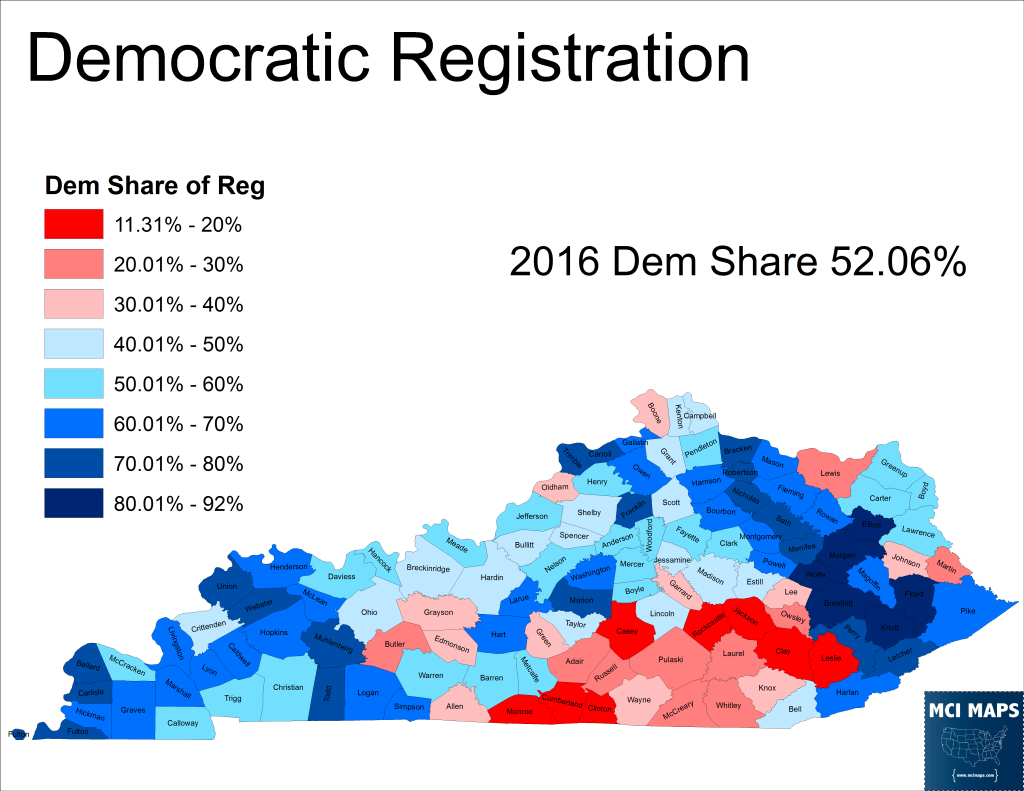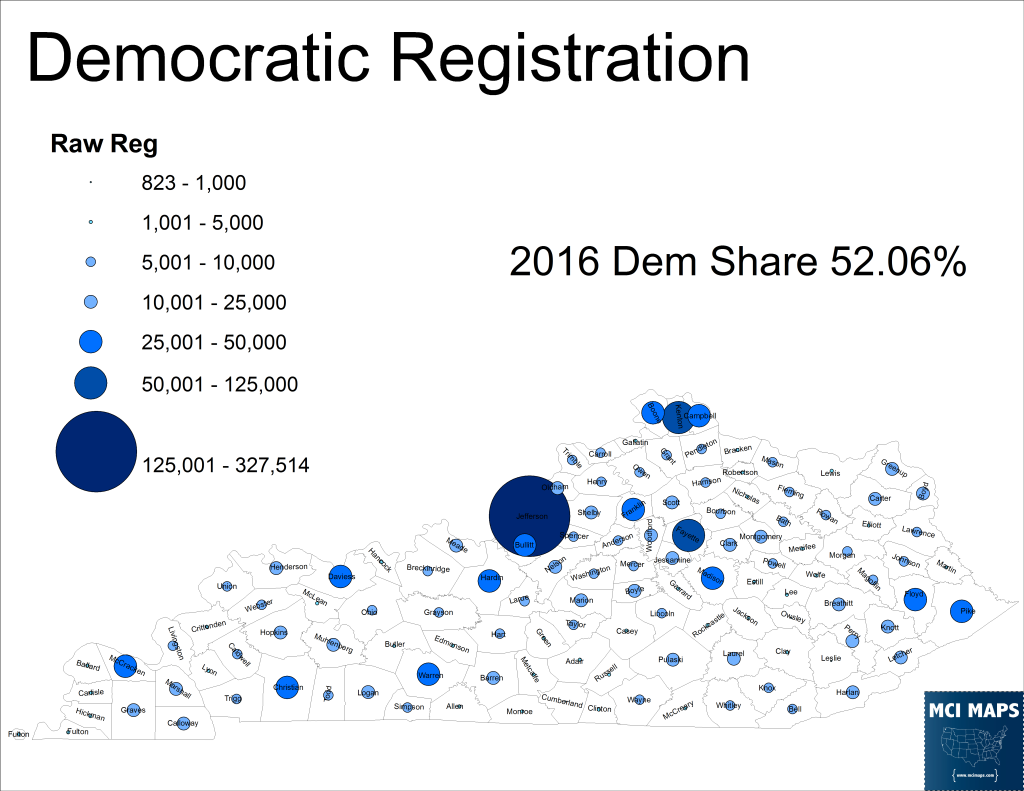Tuesday is the day of the Democratic Presidential Primary in Kentucky. Bernie Sanders is still trying to amass delegates in an increasingly long-shot effort to get the Democratic nomination. Clinton, hoping to put Sander’s away for good, has opted to actually spend money in the contest after ignoring Indiana and West Virginia. Kentucky’s closed primary is being sited as an opportunity for Clinton, as she often performs better in closed contests. However, this author is unconvinced, and sees Kentucky likely to be West Virginia Part II.
Conservative Democratic Protest Votes
Last week, Sanders won West Virginia by double digits with the help of conservative Democrats. West Virginia’s coal counties overwhelmingly rejected Clinton, with her getting percentages in the 20s and 30s. Sanders won democrats who wanted a president more liberal and more conservative than Obama, and coal-industry homes overwhelmingly rejected Clinton. You can read all the details in my post-primary analysis. Clinton’s performance last week in West Virginia had a correlation with the the 2012 primary there, which saw Obama only got 59% to a protest vote candidate, Keith Judd. Judd won several counties in the 2012 primary against Obama in the southeast coal region.
When examining how Clinton did compared to Judd’s 2012 performance, a clear correlation is shown. Clinton did worse in counties that Judd did well in four years earlier.
The logic here is pretty simple. Clinton is running with a message of continuing and protecting Obama’s legacy. Obama is deeply unpopular in coal country and Clinton has made several statements on the subject that don’t endear her to that industry. These conservative Democrats, long removed from the national party, backed Sanders; partly due to his economic message, but also as a protest vote to reject Clinton. Sanders’ energy policies are very liberal and his platform does not fit well with conservative Democrats. The West Virginia exits showed a third of Sanders backers would have voted for Trump in November even if Sanders was the nominee. While a majority of Sanders backers supported him because they preferred his economic message, a large minority were doing so as a protest. It is easy to see this happening again in Kentucky, where there are large shares of conservative Democrats in coal country.
Kentucky’s Conservative Democrats
Kentucky, like West Virginia, has a large number of conservative Democrats. The state is over 50% Democratic in registration, but overwhelmingly backed Romney and McCain. The state, like West Virginia, has been trending away from Democrats with every cycle. The Gubernatorial Election was a major Democratic loss against a flawed GOP candidate last year, and the state house is only Democratic by a handful of seats. In 2012, Obama was unopposed for the Democratic nomination, but still only managed 58% against the option of “uncommitted.”
In addition to Obama’s poor showing in the primaries, Obama drastically under-performed the Democratic registration in the coal counties in the general election.
Look at those maps then look at the coal production map below, retrieved from the KY Geo Alliance website.
These “uncommitted” counties were heavily Democratic in registration in 2012, and while the Dem share has fallen slightly, these counties are still heavily Democratic.
Democratic share of registration has fallen slightly since 2012, but only by a few percentage points, leaving a large majority of the conservative Democrats of 2012 around. In 2012 the uncommitted counties made up 35% of the statewide Democratic registration, now they are 33%, a drop, but a modest one.
When examining the fall in Democratic share by county, the largest drops have been in the western counties, while drops in the eastern coal region has been more modest.
Despite the drop, a vast majority of counties are still heavily Democratic in registration, including the east and west coal counties.
Kentucky still has a large block of conservative Democrats that could vote similar to West Virginia, casting ballots for “uncommitted” or voting Sanders as a way to spite Clinton. This large block makes her winning the primary trickier. Even large wins in other regions of the state could be offset by getting very low shares in the east and west coal counties thanks to Sanders and “uncommitted” getting the protest votes.
How Much does a Closed Primary Help?
There is notable evidence that Clinton does better in closed primaries than open, though it should be reminded that she has won a large share of open or semi-open contests. West Virginia was only semi-open, allowing NPAs to vote but it wasn’t like registered Republicans could vote on the Dem side. A good deal of attention has been paid to the exits, showing Clinton winning Democrats but losing Independents. However, we must remember the exits are self-ID party loyalty, not actual registration. The West Virginia exits had independents at 34% of the vote, but NPAs only make up around 20% of registration in the state. Also, its questionable so many independents would show up to vote between two Democratic candidates with platforms that don’t mesh well with West Virginia’s coal-led economy. It is reasonable to assume many of these self-ID’d independents were registered Democrats. Kentucky’s closed primary will keep non-Democrats from voting, but it doesn’t keep the conservative Democrats that will heavily reject Clinton out of the process, and its reasonable to believe the exits will still show a significant independent vote in the party ID category. A closed primary helps Clinton, but in a state like Kentucky, conservative Democrats are her biggest problem.
Clinton Win relies on Louisville
For Clinton to win she would have to win large margins in Jefferson County, home to Louisville, and do well in Fayette, home to Lexington. Jefferson county, which holds a modest non-white population, is 19% of registered Democrats in the state, while Fayette is second with 6%. Fayette, however, may be more Sanders as it holds the University of Kentucky and a smaller minority population.
Clinton needs two things to happen for any shot at winning Kentucky. Fayette must go to her or be a split, and Jefferson must be big for her, a 20 point margin most likely. In addition, Jefferson’s share of the vote must exceed its share of registration. In 2012 Jefferson was 18.5% of registration but 24.2% of the primary. Since it is now 19.4% of registration, it needs to be at least 25% of the actual vote. If Clinton can win that county big and do decent in areas around it, she may have a shit at offsetting the likely large losses in the coal counties.

